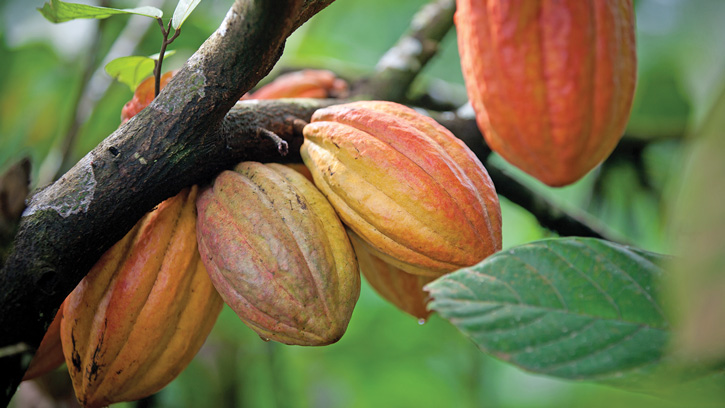Fostering Cocoa Sustainability With Satellite Monitoring
TECHNOLOGY
Achieving sustainable cocoa production is an ongoing challenge for small farmers in West Africa, Indonesia, and Latin America. Cocoa farmers experience poverty and uncertainty due to volatile and low prices, tree diseases and pests, and a lack of financial and technical resources to improve their crop. Even when financing is available, farmers lack the low-risk profile that would allow them to receive favorable loans to make improvements that would help them adapt to this challenging situation.
Unfortunately, poverty and vulnerability often lead to reliance on child labor or deforestation. The use of child labor reduces labor costs, and clearing natural forests to plant more cocoa is an attempt to increase production by expanding the planting area. Stress on cacao trees brings another level of uncertainty, and is increased by heat and shifting rainfall associated with climate change.
The Role of Satellite Technology
When implementing a sustainability program, one of the most effective planning tools available is satellite technology, which offers a landscape-level view to assess a variety of factors and answer key questions. These include:
• Where is deforestation occurring on or near cocoa farms and what is driving the forest loss?
• Where is shade cocoa/agroforestry being adopted?
• Where is carbon increasing on farms?
When combined with farm polygons, satellite data can provide an even fuller picture, identifying the most productive farms, those with the highest deforestation risk, whether farm production matches its size, and which farms are in the most vulnerable zones for climate change and require more resources for adaptation.
Satellite technology can also pave the way to form beneficial partnerships, increase accountability for suppliers, and use and direct resources more efficiently. By showing where deforestation is happening, local public-private coalitions have a firm idea of where to act and can offer unbiased proof to investors, governments, and consumers that implementing a deforestation plan will create real results for farmers and forests.
Among the measures that address sustainability, deforestation-free commitments are the most prevalent. Many companies are also moving toward forest-positive strategies with commitments to increase cocoa agroforestry and reforestation in their sourcing landscapes. The two efforts are evident in a number of net zero climate targets companies have announced. These commitments have created real momentum behind reducing deforestation, planting more trees, and fighting climate change—all of which can deliver benefits to cocoa farmers, such as farm-level climate resilience with increased shade, carbon revenue from tree planting, food security, and income diversification from new agroforestry systems.
To achieve deforestation-free sourcing, satellite data must be combined with other GIS layers, cocoa supply chain data, and on-the-ground engagement with farmers and partners. The combination helps monitor supplier risk and performance, and identifies deforestation in near-real time, linking it to individual companies’ supply chains. The information can then be used to improve supplier engagement with farmer risk ratings and provide real-time deforestation alerts to halt forest clearing.
Another push in sustainable cocoa production is agroforestry and reforestation in and around cocoa communities. With satellite technology, it is possible to distinguish between full-sun versus shade-grown cocoa, identify where tree planting has been successful, and measure carbon levels on smallholder farms, which could potentially deliver carbon payments directly to farmers, provide them an additional source of income, and help with scope 3 emission reductions in private sector net zero plans.
This same technology can monitor farm rehabilitation progress by identifying when and where a cocoa farm is cleared and replanted. Monitoring farm-level changes also reduces some of the risk associated with making loans available to farmers.
Acting Together and at Scale
Reducing deforestation and increasing tree planting helps to combat climate change, improve farmer livelihoods with crop and income diversification, capture more carbon, increase farm- and landscape-level resilience, and reduce pressures on remaining natural forests. Satellite technology will help the cocoa industry and its many partners achieve these goals while showing consumers who are concerned about deforestation and biodiversity loss that companies at every juncture in the cocoa industry are working to become part of the solution.


